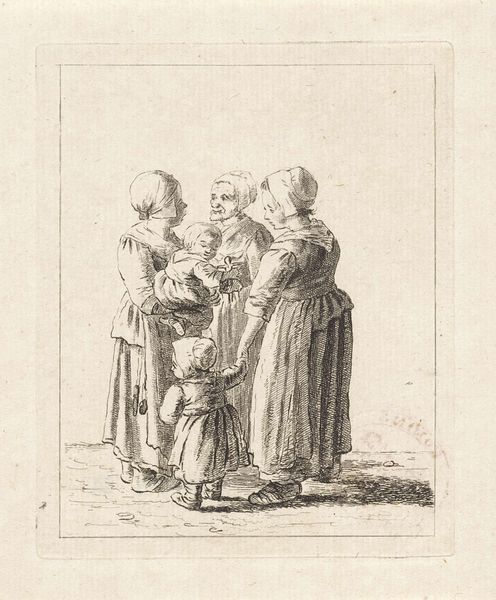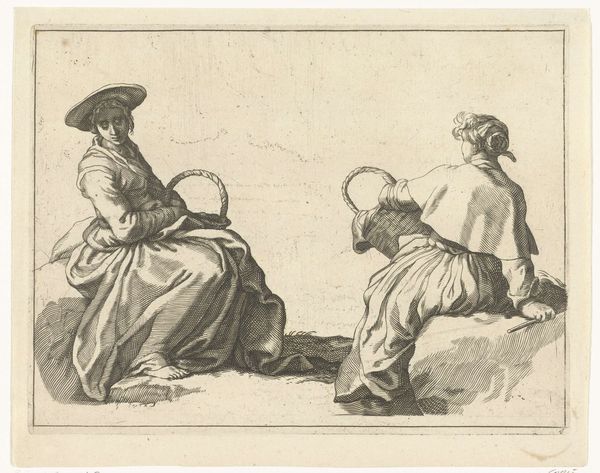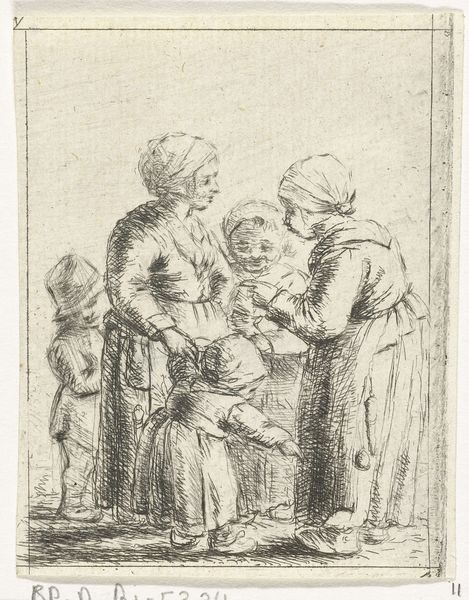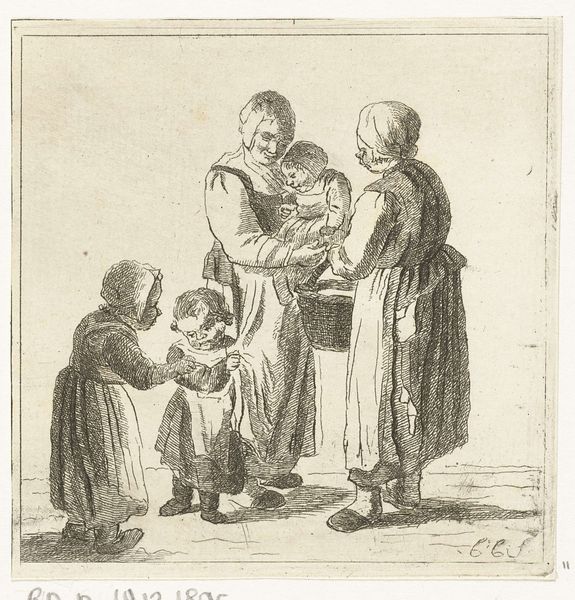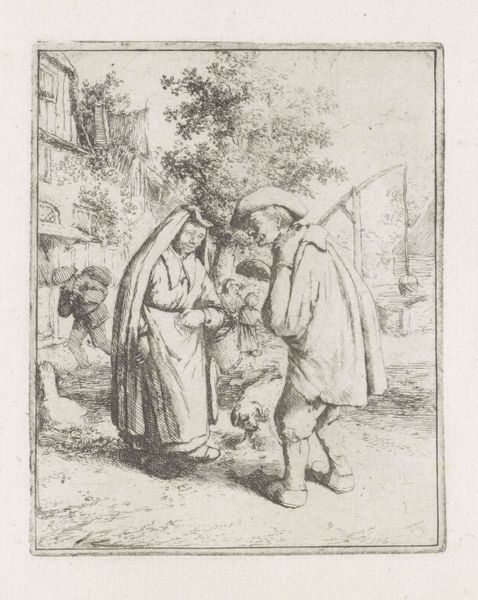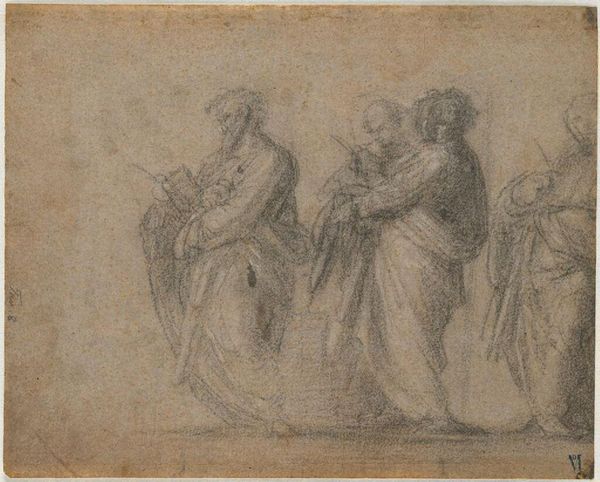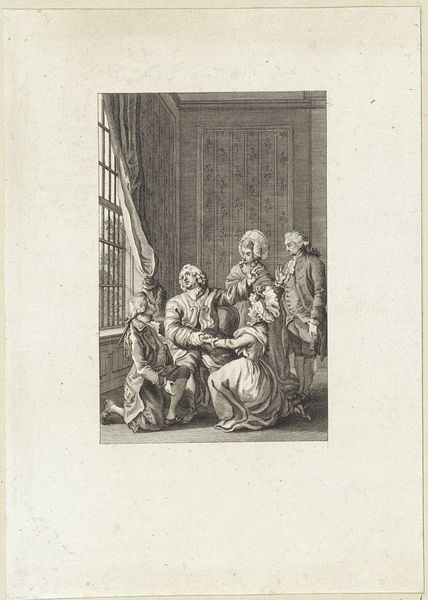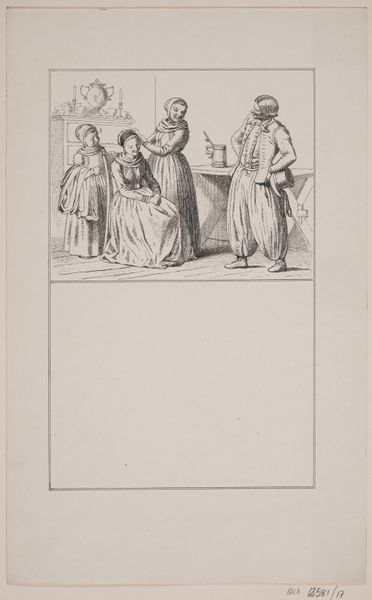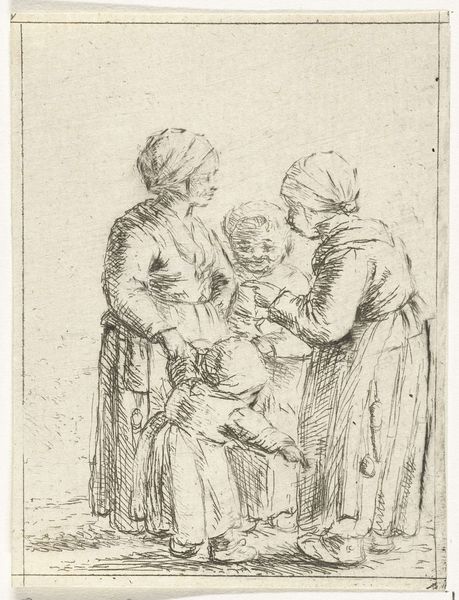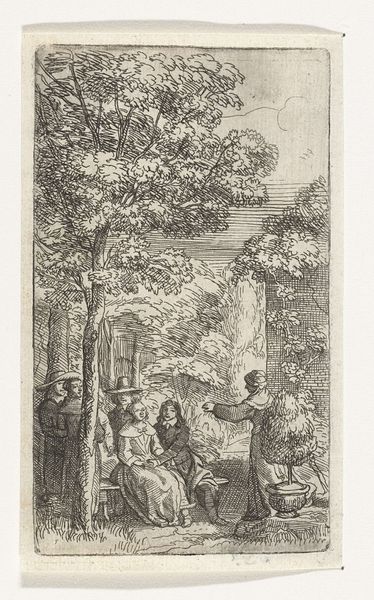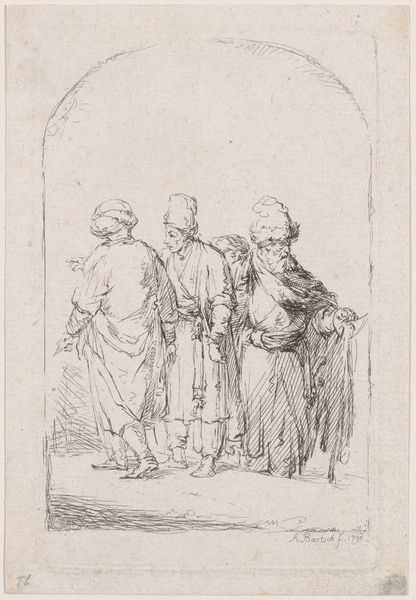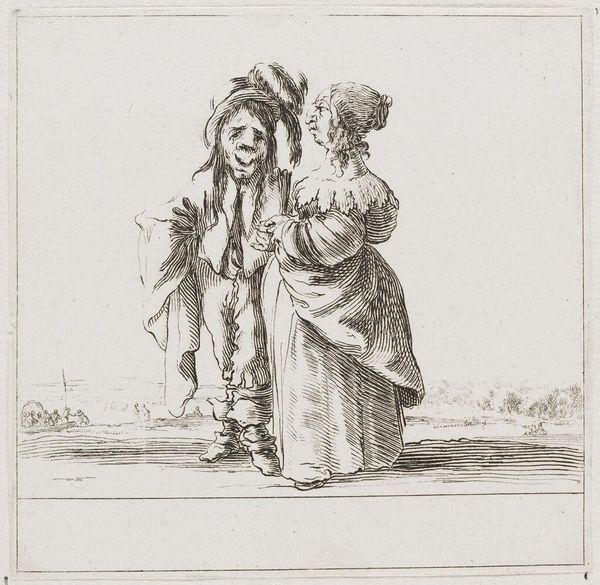
drawing, pen
#
portrait
#
drawing
#
mother
#
pencil sketch
#
figuration
#
romanticism
#
pen
#
genre-painting
Dimensions: height 110 mm, width 90 mm
Copyright: Rijks Museum: Open Domain
Curator: Let's discuss this compelling drawing by Nicolaas van der Worm, titled "Group of Three Women and Two Children," dating from somewhere between 1772 and 1828. Editor: My immediate impression is one of domesticity, though subtly melancholic. The grey drawing on a white background with little light has something nostalgic and even slightly unsettling about it. Is that intentional, do you think? Curator: It's a portrait, yes, but it also strikes me as an early exploration of collective identity, especially concerning women in domestic roles. The lack of clear individualization forces the audience to observe them as a family unit with distinct features based on dress and gesture. Editor: I can appreciate the focus on community, but I also wonder about the specific politics at play here. How are these women positioned within the societal power dynamics of the time? The arrangement itself is revealing, almost like an embrace that cuts you off from seeing any defining personality. Are these figures meant to represent stability or perhaps constraint? Curator: I agree. The symbolism could point in both directions. Note, however, how Romanticism shaped artistic production during this era, with heightened sentimentality becoming part of familial images that circulated among bourgeois audiences at the time. Family values in public space are valued, while motherhood gained socio-political visibility. Editor: The history of visual imagery supports your point. How were images like this consumed, and what was their role in the social construction of femininity and family at the end of the 18th century and the beginning of the 19th? This kind of portrayal inevitably upholds certain ideas of womanhood. Curator: It is difficult to say without further historical information about its patron or reception in public and domestic environments. Editor: A drawing like this forces us to remember how depictions of women’s groups are steeped in historical power dynamics, often conveying carefully curated versions of social realities. Thank you for pointing out how we can further understand this interplay today. Curator: It serves as a potent reminder that representations are not innocent. It offers new avenues for looking closely and learning through art.
Comments
No comments
Be the first to comment and join the conversation on the ultimate creative platform.
